Even after earlier poaching attempts left her crippled, Chandni was the ultimate survivor, giving birth a few months ago. Now, she’s been snared by poachers and her cub is missing

Aarey Colony has lost one of its most beloved residents — Chandni, a six-year-old female leopard, was found dead in a wire snare setup by poachers. Even the proverbial nine lives couldn’t save this big cat, who had escaped from a similar trap in 2014 and even gave birth to a cub last year, only to be separated from it so cruelly.
Also read: Volunteers find, remove 2 snares inside Aarey Milk Colony
ADVERTISEMENT
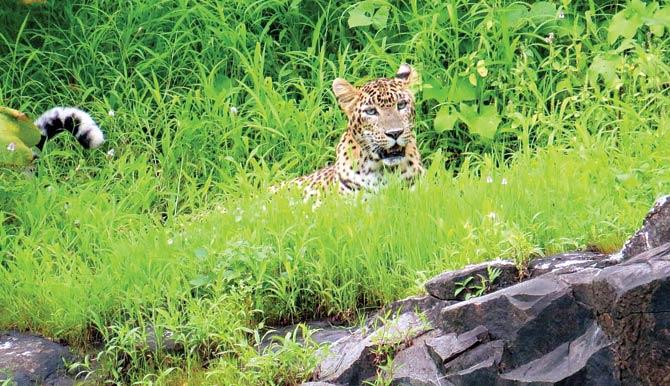
Chandni (seen in file pic above) was killed around two weeks ago
Watch adorable leopard cub playing with his mother
Death trap
This is the first poaching death in Aarey, which is home to at least seven leopards and other wildlife as well. Chandni’s death is not only a great loss for the city’s wildlife but also points to the growing menace of poaching. Barely 20 feet from the spot where Chandni got trapped, forest officials found yet another trap and deactivated it. Aside from that, mid-day had already reported a month ago that volunteers had found two snares in Aarey. What’s worrying is that poachers have now become bold enough to hunt even in Aarey, despite the fact that there is considerable human activity there, unlike other forests.
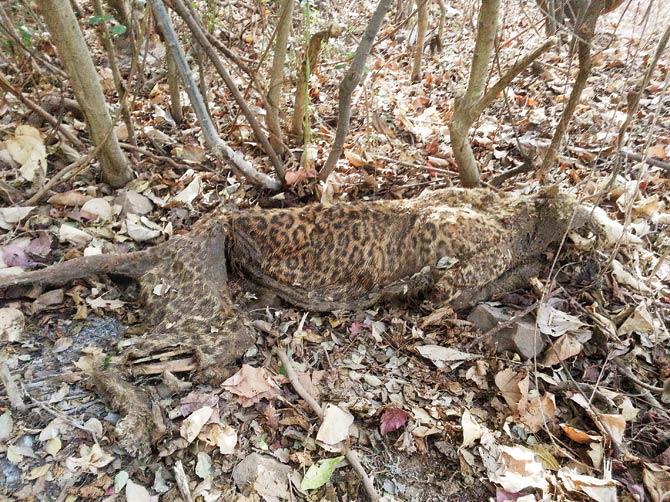
Chandni (seen in file pic above) was killed around two weeks ago
The officials are equally puzzled why the leopard’s death hadn’t been reported before. It was around noon on Saturday that the body was found by a group conducting a tree census for the BMC. But the body was found in advanced stages of decomposition, which means Chandni may have died as long as two weeks ago. According to the Forest Department (FD) officials, the leopard’s hindquarters got trapped in the snare, and the animal might have injured itself further while trying to escape, causing a huge loss of blood. But the leopard must have cried out in pain during its ordeal, so it’s surprising no one reported the incident, even though there is a house just 100 metres away. “The animal might have been snarling in pain after it got trapped in the wire snare and so we are also going to take statements of the locals and the tribals who farm the nearby land, to ask if they heard any growling,” said an FD official.
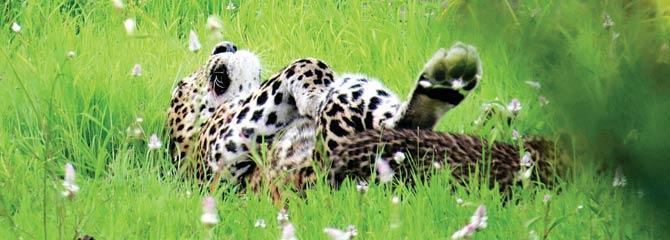
Chandni the leopard was spotted frolicking with her cub in the Aarey grasslands in August last year
Based on the rosette patterns formed by its spots, the leopard was identified as Chandni (LF-01) by a team of researchers who are helping Thane FD in its leopard monitoring study in Aarey. Ironically, Chandni had got stuck in a snare earlier as well, and lost most of the claws on her front-left paw in her attempt to escape. “In November-December 2014, we got a video of this female leopard in the infrared camera trap that we had installed in Aarey and we observed that the animal was limping, which was a serious issue. Our group members got close-up images of her front-left paw and we found that it had only one claw and that was why she was limping. This also hinted that she might have got trapped in a wire snare trap and lost her remaining claws while trying to escape,” said researcher Rajesh Sanap.
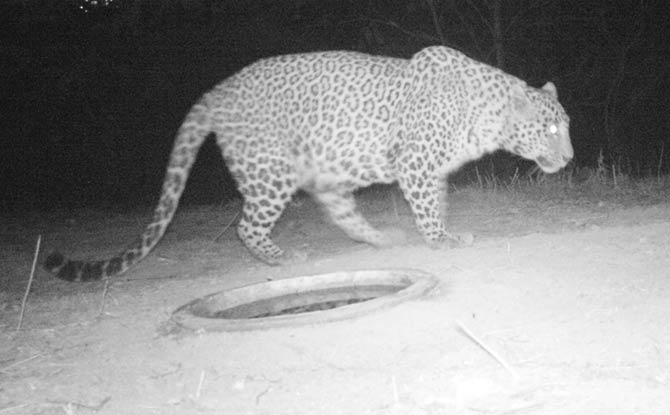 Chandni was spotted limping in the camera trapping footage in 2014. Her body was found in a wire snare on Saturday noon, around two weeks after her death. Pic/Aareygroup, Thane FD
Chandni was spotted limping in the camera trapping footage in 2014. Her body was found in a wire snare on Saturday noon, around two weeks after her death. Pic/Aareygroup, Thane FD
Researchers pointed out that despite the fact that Chandni was injured and limping, she never attacked any humans even though she prowled quite close to their settlements. The researchers were pleasantly surprised that despite her handicap, Chandni was not only surviving in the wild without man-animal conflict, but had also given birth. They spotted her with the cub in August in the camera trapping footage, and then saw the mother-cub duo again in broad daylight, as they frolicked in the Aarey grasslands. This is what convinced them that Chandni didn’t need to be rescued, said a forest official, adding that when a leopard is with a cub, they prefer not to disturb the animal.
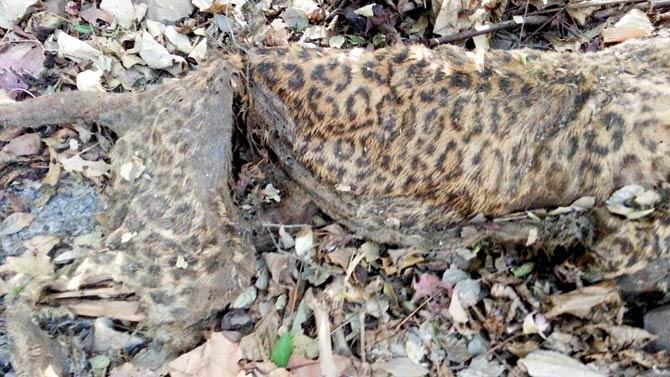
However, since November, they had not been able to trace Chandni’s location and assumed she might have moved to another territory. “We have been trying to locate Chandni and get her movement on camera. It was important data for us because she had a cub and we were curious to see how this animal — who was not physically fit — raised her cub. Generally it is believed that when an animal gets old or is not physically fit to hunt, it attacks humans, but the study of Chandni over a period of more than 18 months has helped us understand that this belief is wrong. Locals said they had seen a limping leopard very close to their homes, but she would immediately runs into the bushes on seeing them,” said a volunteer in the leopard study.
It was the paw with one claw that confirmed the dead leopard was Chandni. The Thane FD officials collected samples from the body and sent them for forensic examination to find out the cause and time of death. The FD is also in search of her cub, and there are plans to set up more camera traps in the area to keep an eye out for it.
 Subscribe today by clicking the link and stay updated with the latest news!" Click here!
Subscribe today by clicking the link and stay updated with the latest news!" Click here!







